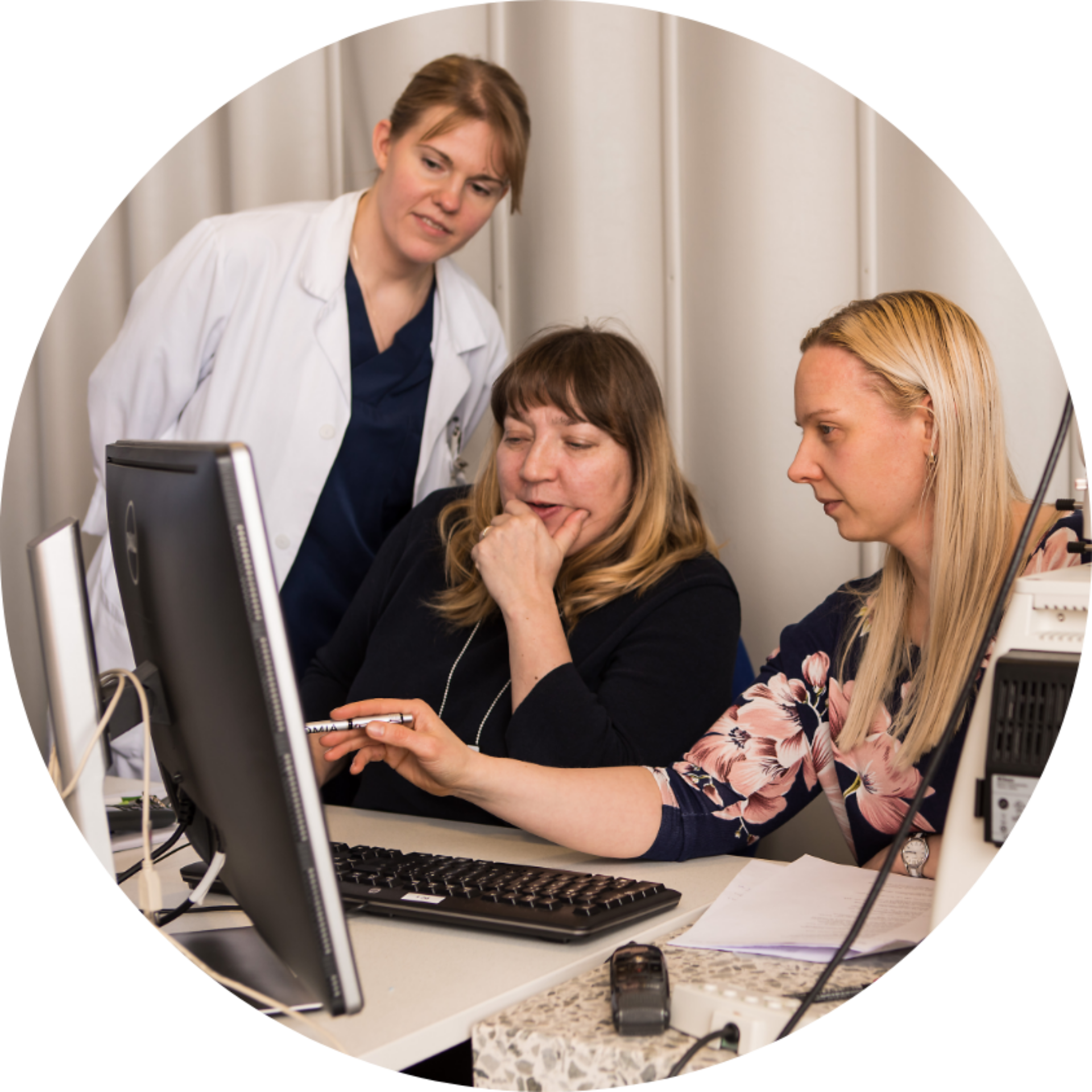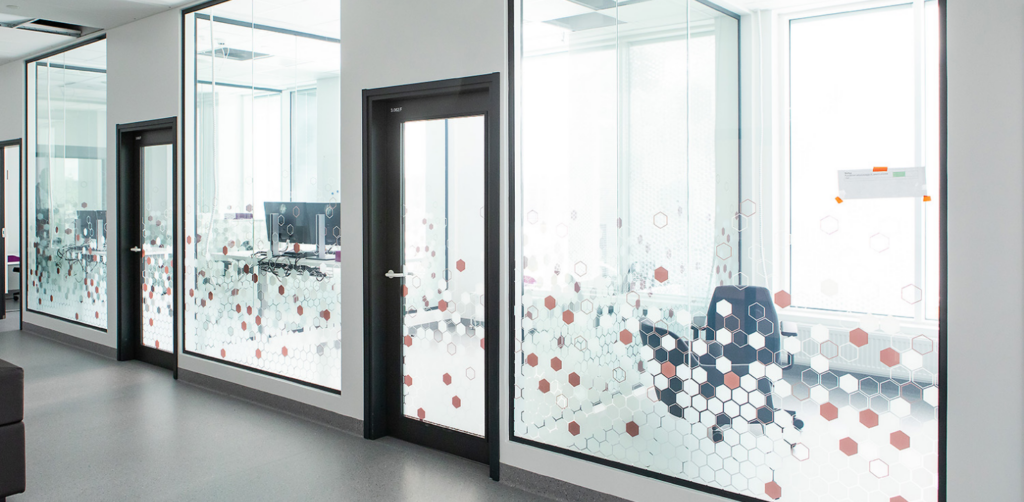
Molecular profiling of tumors and investments in research promote tailored treatment of cancers
Cancer in the same organ and looking similar in the pathologist’s microscope can be very different in different patients. From this follows, that the same treatment will not work for everybody. Finding out the genetic composition of a tumor reveals differences in cancer types and makes it possible to tailor treatment to match the tumor perfectly.
The genetic makeup of tumors, the genome, has been determined for about 15 years. This is usually done with a technique called Next Generation Sequencing (NGS), which allows designing gene panels of the desired size.
“Historically, cancers have been differentiated from each other based on their starting point and tissue type. Sequencing has made it possible to distinguish between types of cancer that look similar under a pathologist’s microscope. We are talking about molecular profiling of tumors, explains Chief Physician Annika Auranen, Director of the Tays Cancer Centre.
Tumor gene profiling is performed when clinically indicated
In some cancers, molecular profiling is already part of the standard clinical treatment. Profiled tumors can be treated individually with targeted drugs based on discovered genetic changes. This is the case, for example, with lung cancer.
However, profiling is not done routinely, but must be relevant to the patient’s treatment. Toni Seppälä, a gastrosurgeon and professor of cancer research , studies, among other things, how drugs are effective against tumors of a particular patient with the help of clusters of cells grown from cancer cells, i.e. organoids. He is a pioneer in organoid research in the Finnish hospital world.
“We are using organoids to study drugs that can be applied now and in the near future, but also more experimental designs. This is an interesting emerging technology that clearly works, Seppälä says.
However, targeted drugs depend on being applied to a specific gene profile.
“Some patients can be treated with pre-treatment and surgery and do not need long-term systemic medication, so targeted drugs are not applied in such cases.
If the patient has metastatic disease, molecular profiling is used in many types of cancer.
“Even in such cases, a panel of 15–50 genes is usually sufficient, because drugs or indications for drug treatment exist currently only for a limited number of genetic changes. . But even if it is known that one targeted drug works in another type of cancer, European indications do not allow it to be applied to a type of cancer in which it has not been studied,” Seppälä says.
Indication means that a particular medicine or treatment has been shown to benefit the patient in the disease in question.
Finprove study seeks new uses for existing medicines
Finprove is a national study focusing on the development of molecular profiled therapy. It is used to find new uses for existing medicines. At the same time, the aim is to address the challenge of treating cancer with a specific molecular profile with a drug developed against that mutation, even if the drug does not yet have an indication for that specific type of cancer.
Minna Tanner, Head of Department at Tampere University Hospital, researcher and one of the founders of the onk FONK cancer drug research centre, the local Principal Investigator in the Finprove clinical trial . The study includes patients who have not been helped by existing treatments and who are in still in a good condition to tolerate further treatments.
“It’s great that already at the research stage, many patients get to benefit from the medicines, and some can take a turn for the better. In my view, the Finprove study makes it possible to bring several targeted medicines approved by the European Medicines Agency to the market,” Tanner says.
The study also overcomes the challenge of the medicine reimbursement system, where the lack of a marketing authorization for a medicine for a specific disease prevents it from being reimbursed to the patient.
“Marketing authorization processes take years, and they must be reviewed again and again for a new application, even if the medicine is already in use elsewhere,” Tanner says.
Cooperation with the pharmaceutical companies involved in Finprove enables the introduction of medicines approved for other uses in research.

High-quality treatment requires continuous patient-centred research
In order to keep up with the times in cancer treatment, research must constantly go hand in hand with standard treatment.
“We would be ten years behind if we only adopted things applied by others. For this reason, doctors and staff must also be given time for research . It should be thought that this is part of the duties of a doctor at a university hospital, Auranen emphasizes.
A lot of research funding is acquired from outside, but according to Auranen, the time resources required for research should be better taken into account by the employer. Seppälä agrees.
“These are also complex issues for treating doctors. If research does not go hand in hand with standard clinical care all the time, we will not be able to train surgeons who have a deep understanding of what treating cancer is all about. In the treatment of metastatic cancer, these issues must be taken into account extensively from the beginning of treatment. Another challenge is that surgical specialization programs do not involve surgical oncology, i.e. a broader understanding of molecular medicine.
In addition to clinical work, Seppälä studies the vulnerabilities of cancer and the possibilities of technology in diagnostics, i.e. diagnosis of the disease.
“This kind of job description is rare and demanding, but it is also important to have experts who work both on the clinical side and as researchers. Finprove and the patient-centred basic research conducted by Toni Seppälä are a prime example of what kind of work should be done continuously at a university hospital, Auranen says.
Promising results in organoid research
According to Seppälä, translational research is currently carried out on such a large scale that it reaches a large number of patients.
– Patients also have a positive attitude towards the study, which helps us in our research , he praises.
Seppälä’s research groups have so-called wet laboratories in both Tampere and Helsinki, where tumor samples from the stomach and intestines arrive daily. With their help, organoid lines to be studied are created.
Sepppälä is pleased that these developed tools are being taken into clinical trials. Raising funding has also been successful. He considers the primary achievement to be the production of information that can be used in patient care.
“We have promising results showing that drug testing of organoids predicts patients’ response to treatments. However, we still need to move forward to see what kind of impact things have.
Read more
Minna Tanner: Cancer drug research is a rollercoaster of surprises
Cancer Drug Research Unit FONK of the Tays Cancer Centre
The Cancer Research Centre FONK was established in 2015 to enable Tays Cancer Centre to better respond to the competition for international drug trials. At the moment, there are nearly 40 international cancer drug trials that recruit patients at FONK and study different cancers.
The internationally respected and high-quality pharmaceutical research centre FONK conducts both academic cancer drug research and cooperates with pharmaceutical companies. Drug trials increase patients’ chances of receiving treatment with new cancer drugs as early as possible.
Finprove study
The Finprove study uses molecular profiling of tumors to find new uses for existing drugs. Several international pharmaceutical companies are involved in the study and it has received a major grant from the Cancer Society of Finland. The principal investigator of the project, sponsored by Helsinki University Hospital, is Katriina Jalkanen from HUS, and in addition to Tays, it involves the other Finnish university hospitals.
Cell-free tumour DNA examined from body fluids facilitates cancer detection and monitoring
Cell-free tumour DNA examined from body fluids facilitates cancer detection and monitoring.